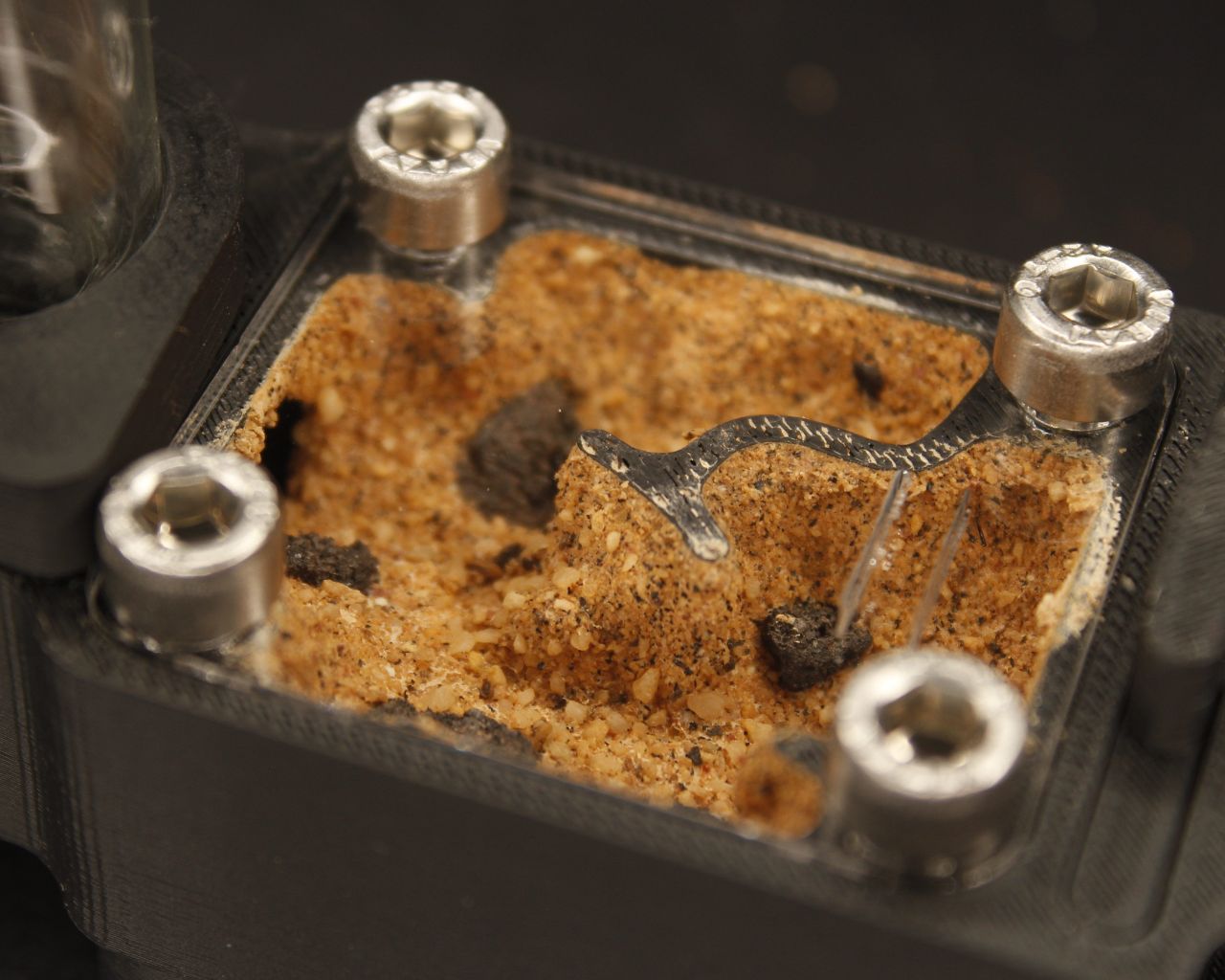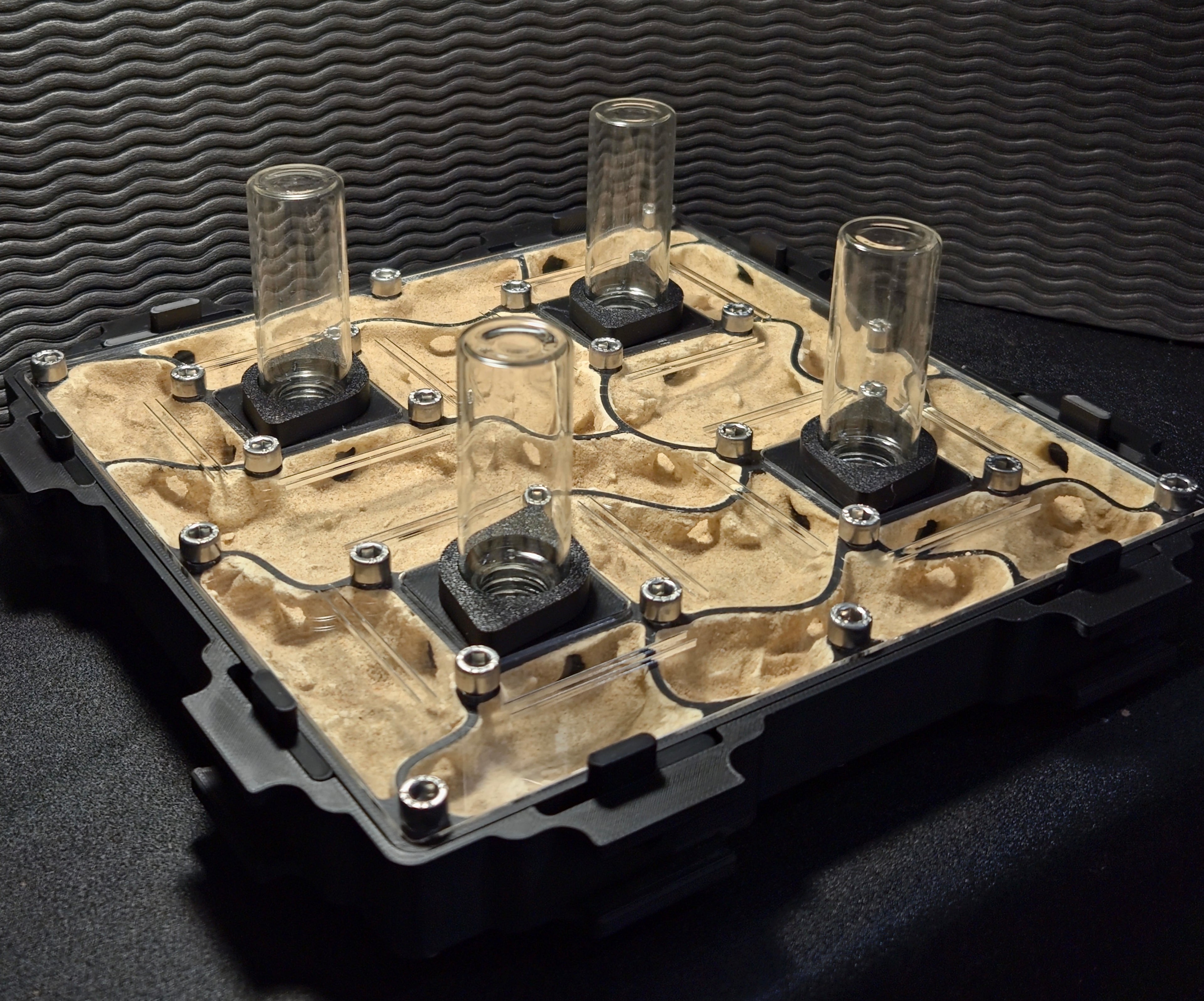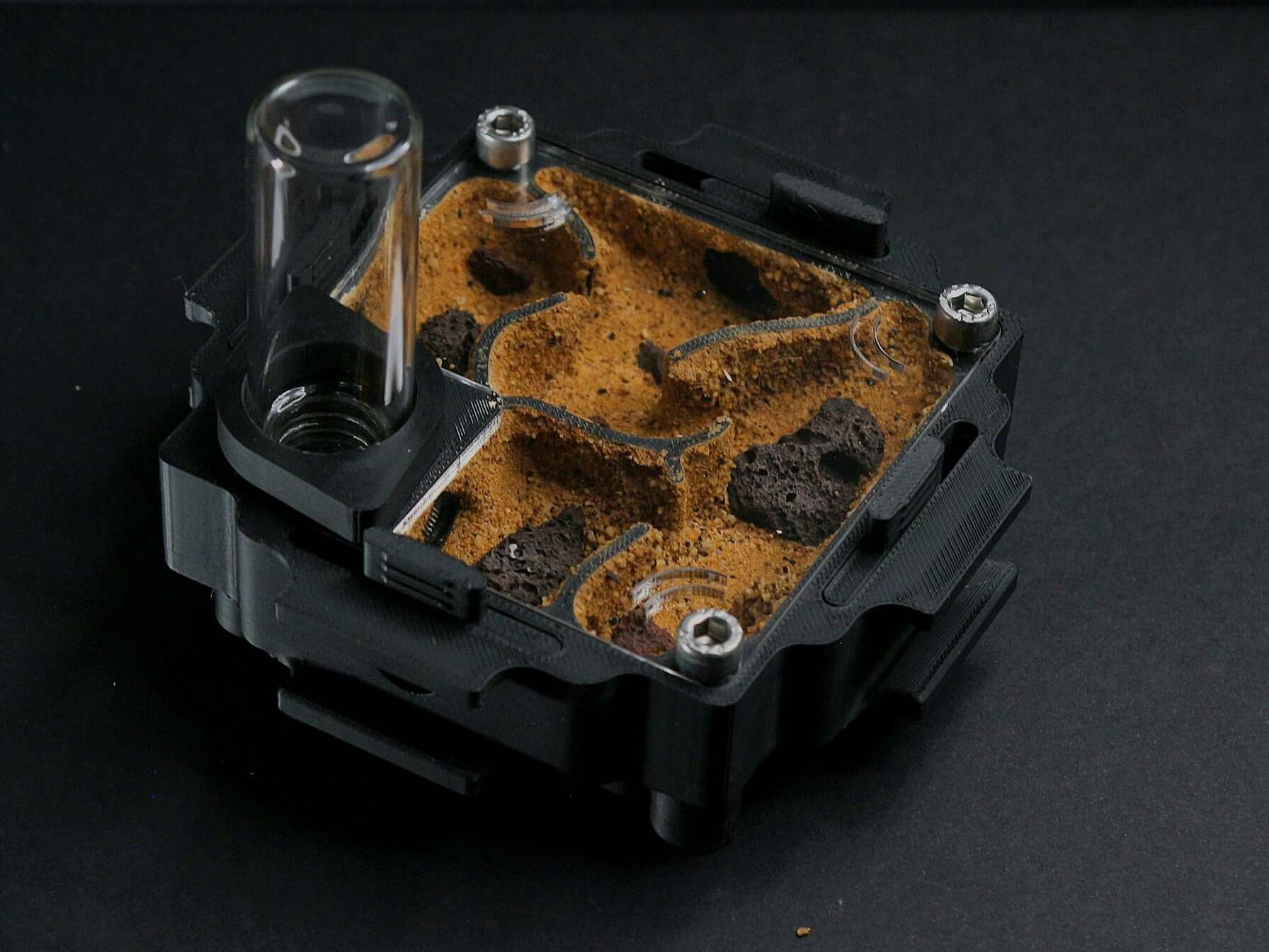Camponotus aethiops — Guía Completa de Cuidados
La Camponotus aethiops es una de las especies más comunes del género Camponotus en Europa occidental, especialmente en zonas secas y boscosas de la península ibérica. Su coloración oscura, casi negra, y su comportamiento tranquilo la convierten en una opción interesante para criadores con algo de experiencia.
Esta especie es conocida por su crecimiento lento y su carácter poco agresivo. Las obreras pueden alcanzar entre 6 y 10 mm, mientras que las reinas superan los 13 mm. Son capaces de formar colonias estables y longevas, aunque su desarrollo inicial requiere paciencia. La reina puede tardar semanas en poner los primeros huevos y los ciclos de cría pueden ser más largos que en otras especies.
Parámetros de cría recomendados
- Temperatura ideal: 22–28°C (toleran entre 18–30°C)
- Hibernación: 3–4 meses a 10–14°C
- Humedad: Media; zonas con humedad controlada y espacio seco para descanso
- Dieta: Proteínas animales (tenebrios, drosophila) y líquidos dulces como aguamiel
- Hábitat inicial: Tubo de ensayo o pequeño formicario con forrajeo limitado
- Dificultad: Media; especie resistente, pero lenta en desarrollo
Consejos de cuidado
- Evita cambios bruscos de temperatura o luz directa prolongada, ya que pueden estresar a la colonia.
- La reina puede tardar en poner huevos después del vuelo nupcial, especialmente si no hay calor estable.
- Introduce la expansión del hormiguero solo cuando haya actividad evidente fuera del nido.
- Ofrece proteínas al menos 1–2 veces por semana para estimular la producción de larvas.
- Permite el descanso invernal cada año para asegurar una vida larga y saludable a la reina.
- No requieren semillas; su alimentación debe centrarse en insectos y fuentes de azúcar.



























